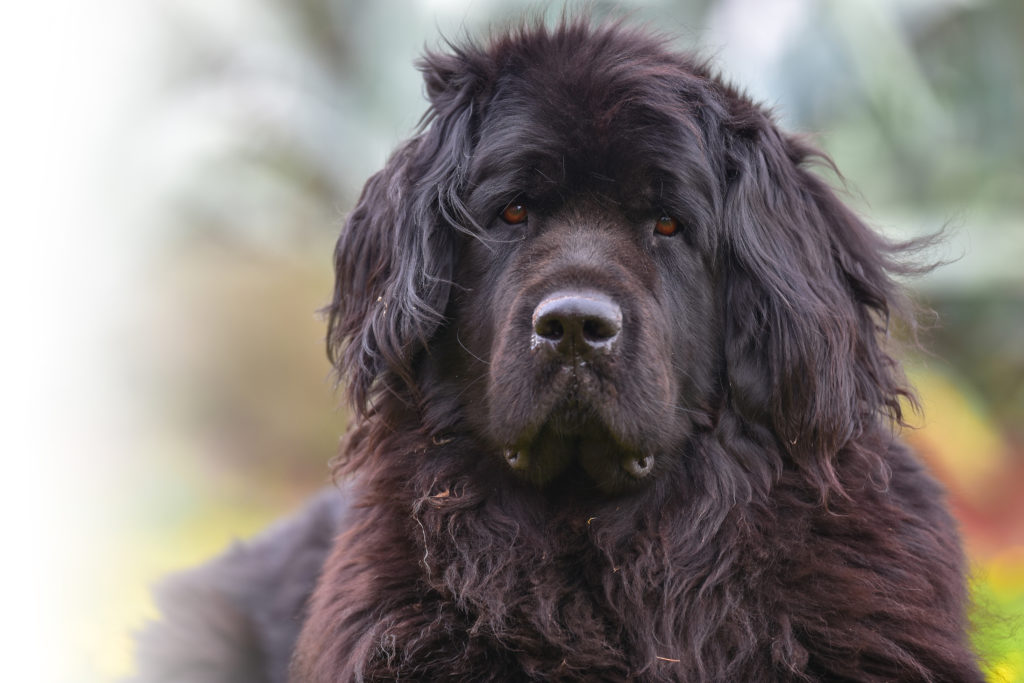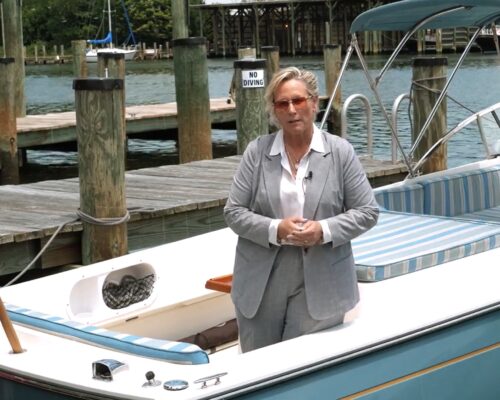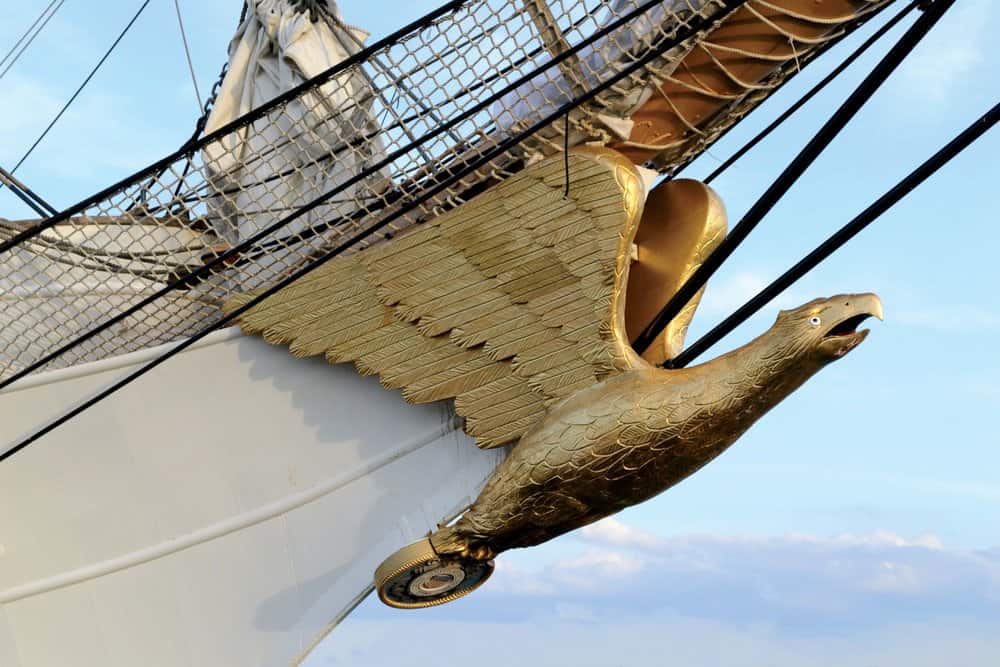Genial giants meet their inner working dog
Just adorable. Who can resist those big brown eyes and all that fluffy fur? I know I can’t. One sight makes me want to give any Newfie a hug, and to heck with all the drool. There’s no doubt that Newfoundland retrievers are among the cutest dogs in the world, as well as one of the top 50 most popular home pet breeds, despite their enormous size. But underneath all that cute exterior lie the bones of a working dog: sturdy bones connected by mighty muscles, covered by a double-thick waterproof coat and propelled by webbed feet that help it surge powerfully through the water.
Some say Newfies evolved from the black “bear” dogs that the Vikings brought to Newfoundland around 1000 C.E. An archaeological dig at a Viking settlement on the northern tip of Newfoundland unearthed skeletons of large dogs. Another theory suggests that they descended from the American black wolf.
Whatever their origin, Newfoundland fishermen used to put these dogs to work hauling nets ashore and drawing carts full of fish to market. The British Royal Navy had Newfies aboard during the Napoleonic Wars to swim tow lines across stormy seas to other ships and to rescue sailors lost overboard. A Newfie named Sailor led the Lewis and Clark expedition over the Rockies. (Well, maybe he didn’t actually lead them, but if Sailor was anything like my dog when we’re out on a walk, you can bet he was always up ahead of everybody else on the trail.) And two Newfoundlands were the ancestors of the hunting breed we know as the Chesapeake Bay retriever.
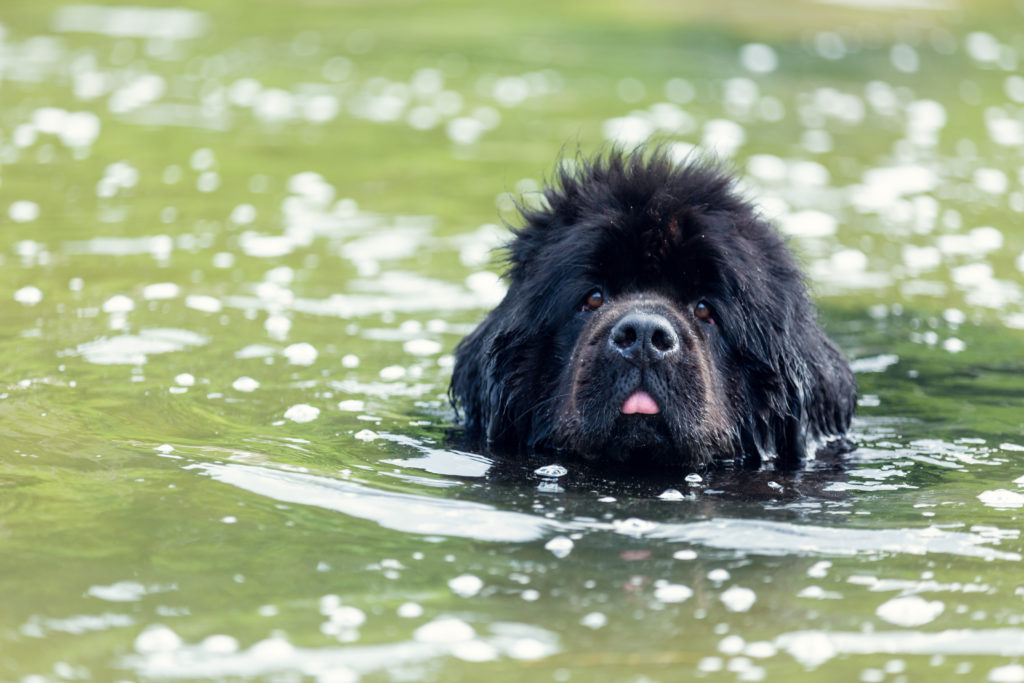
Now that Newfoundlands are becoming more domesticated, the folks at the Newfoundland Club of America don’t want those original utilitarian attributes to disappear from the breed. That’s why they conduct training sessions and certification tests all around the country, where Newf owners can introduce their pet to the inner working dog that lies beneath all that huggable fur.
To pass the test as a certified Water Rescue Dog in the senior division, the dog must retrieve two articles in the proper order; leap from a boat to fetch a paddle; figure out which of three swimmers is the one in distress and carry a life ring to that person; retrieve an object underwater; carry a line from shore to a steward in a boat and then tow that boat to shore; and leap from a boat to save its handler who has “fallen” overboard.
I attended one of the series of seasonal training sessions on an overcast Saturday in July along with Chesapeake Bay Magazine’s summer intern, Noah Hale, a student at St. John’s College in Annapolis. The training took place at Codorus State Park near Hanover, Pa.
The group was not hard to find. There was an array of colorful pop-up tents along the grassy bank of a large lake, and as we approached, we saw that each tent shaded at least one big dog crate, each of which was cooled by an industrial-strength battery-operated fan. Some of the crates were packed with a bucket of water and what appeared to be a bale of black wool—but on closer inspection, the bale bore two liquid brown eyes and an equally liquid sheet of drool forming around the chin.
Most of the dogs were out with their owners, and most of their owners were wearing bathing suits and life jackets. Noah and I nodded to one another knowingly. We had found the right place. We were welcomed by Dwight Gorsuch, president of the Colonial Newfoundland Club, the mid-Atlantic branch of the national organization. Gorsuch lives in Rock Hall, Md., with his wife, Christine, and their four—yes, four—Newfoundlands.
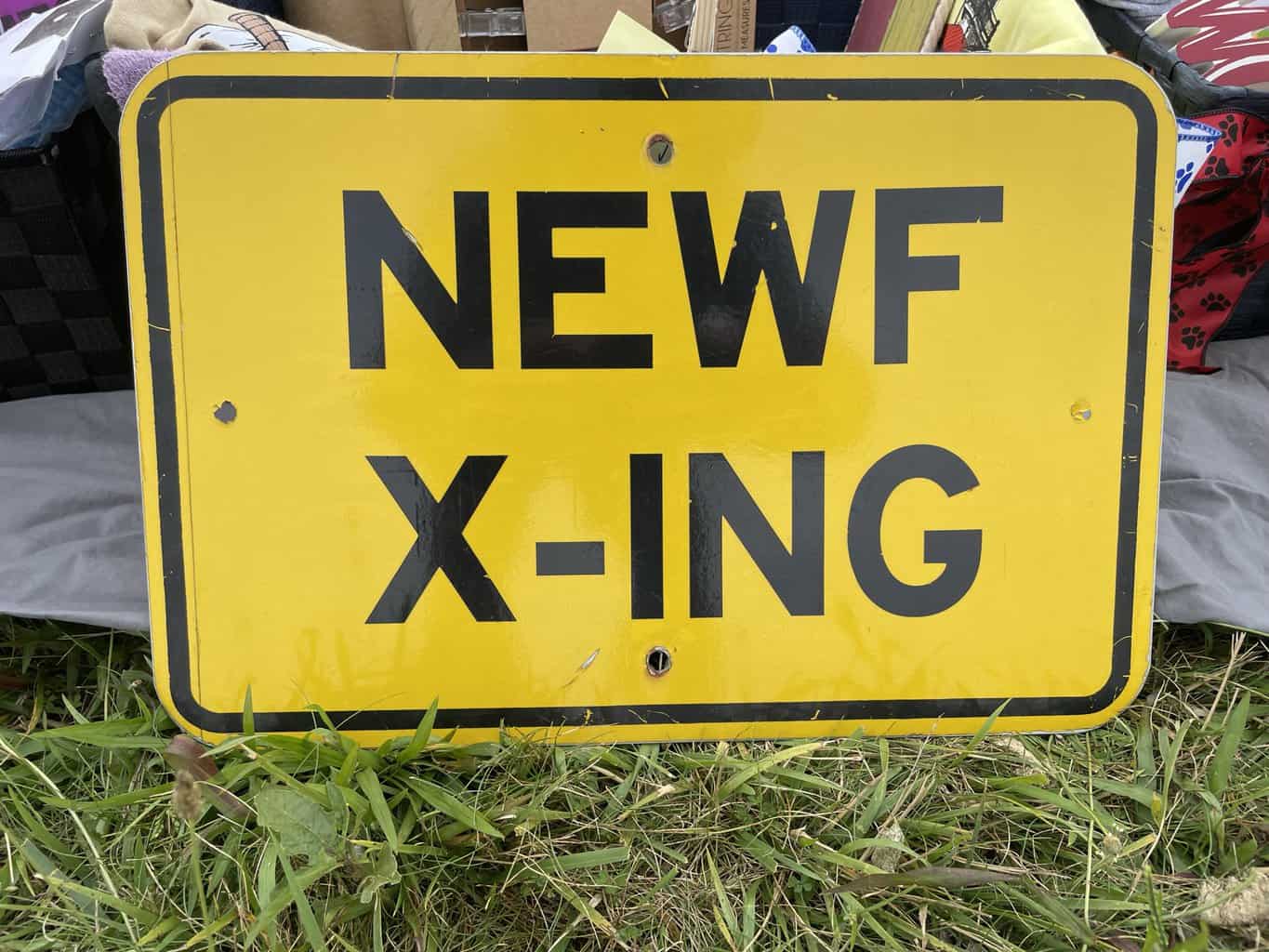
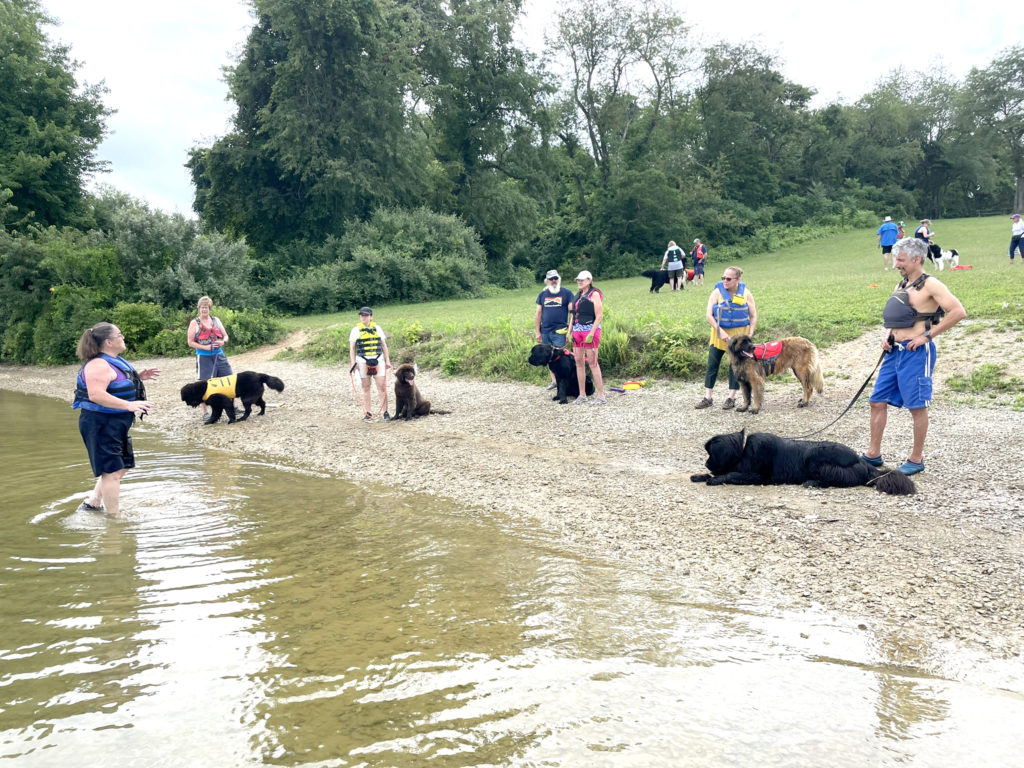
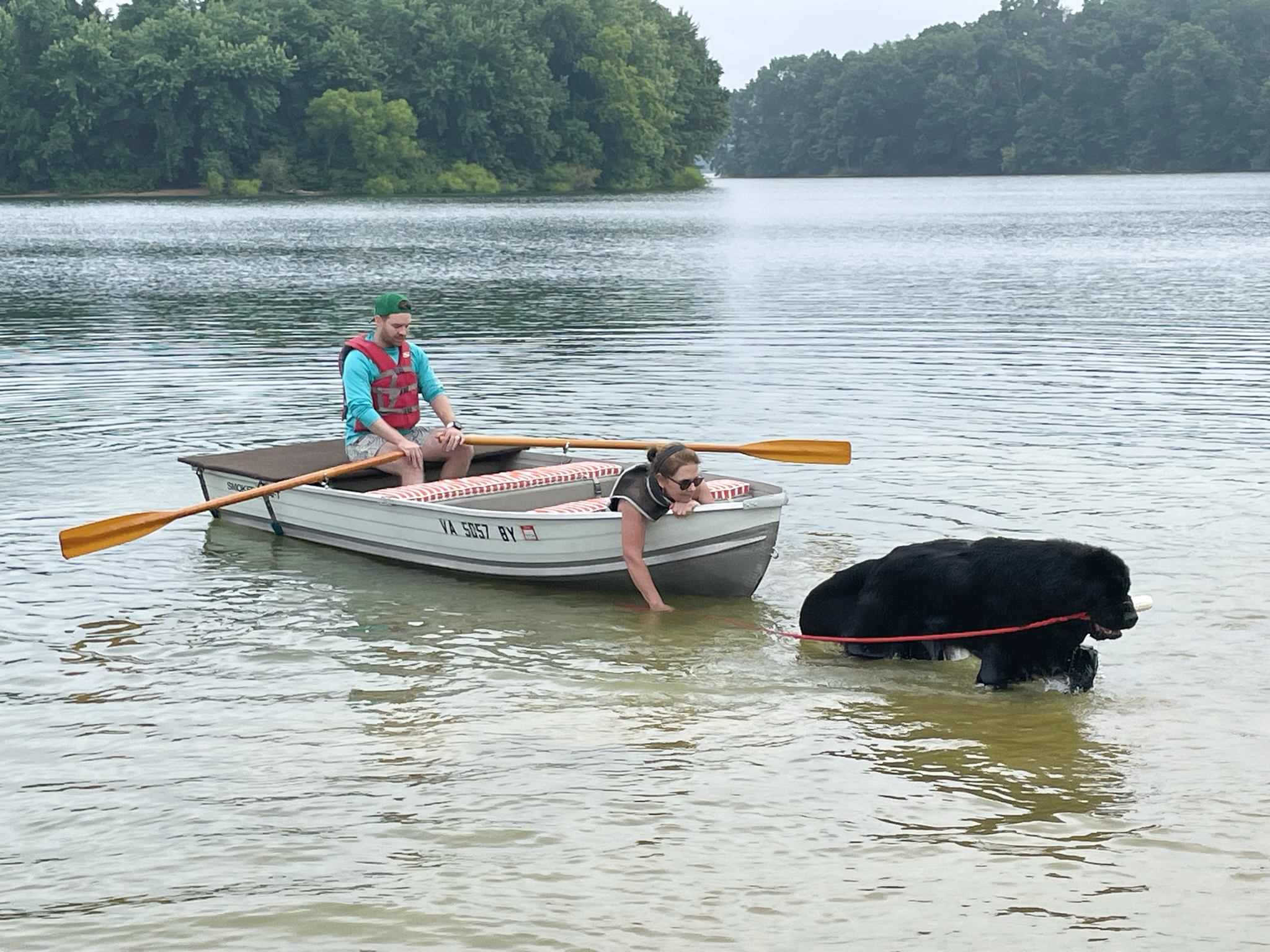
Gorsuch introduced us to the day’s key trainer, Sue Marino, who serves as the regional club liaison for the NCA. Marino has owned Newfies for more than 30 years and has been a volunteer master trainer for most of that time. She came down from her home in Massachusetts to lead this weekend’s session. The participants had come from as far away as New Jersey and Pittsburgh. Sue gathered the two dozen or so dogs and their owners together for a pep talk.
“It’s so exciting to me when one of you progresses to the next stage, or the lightbulb goes off in your dog,” she told them. “That’s all the reward I need. It’s just so much fun and I don’t even have to be working my own dogs to enjoy it. When people say ‘my dog won’t swim’ and that afternoon they’re swimming away, you know? It’s just wonderful—it makes me feel so good.”
Marino cautioned new owners to be patient while training their dogs. Often times, she explained, when your dog doesn’t “get it,” it’s because you’re pushing too hard, too fast. “Everything’s got to be broken down into baby steps,” she said. “We’ve got to take all the little parts of the exercise and train each one so that the dog understands it. Every dog is different. Train it the right way so that your dog’s happy with it, you’re happy with it, and you’ll be successful with it.”
Noah and I waded knee-deep in the cool, clear water of the lake to take pictures of the first training session: carrying a line from shore to a rowboat. The dogs were separated by age groups. The first dog to participate was Cosmo, a 2-1/2-year-old owned by Scott Dickensheets from Montpelier, Va. Cosmo took hold of a small rubber fender attached to a line and waded out toward the boat, then swam a few yards to come within reach of the woman sitting in the bow. She grabbed the line and Cosmo, still holding the fender in his mouth, pulled the boat to shore.
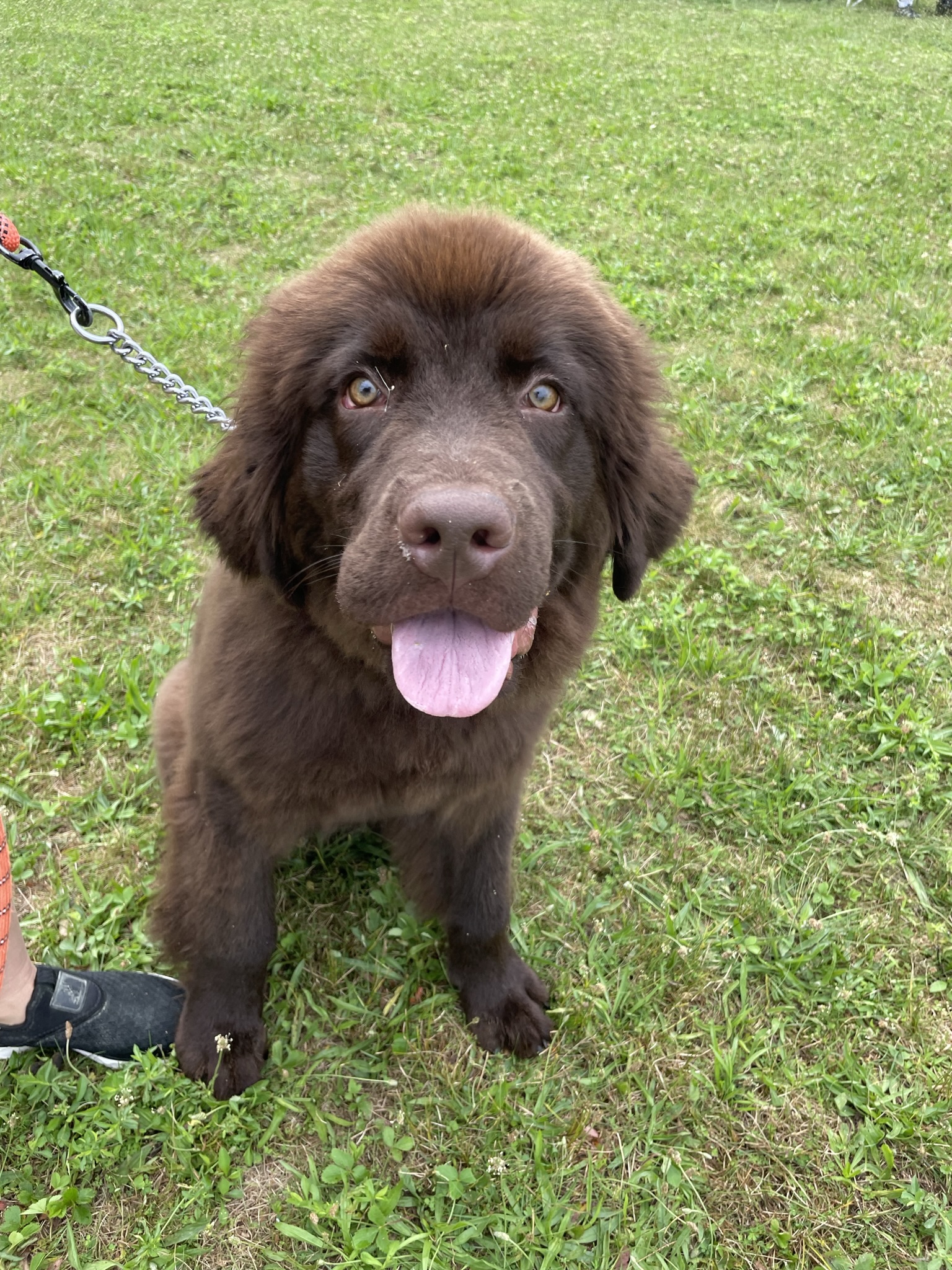
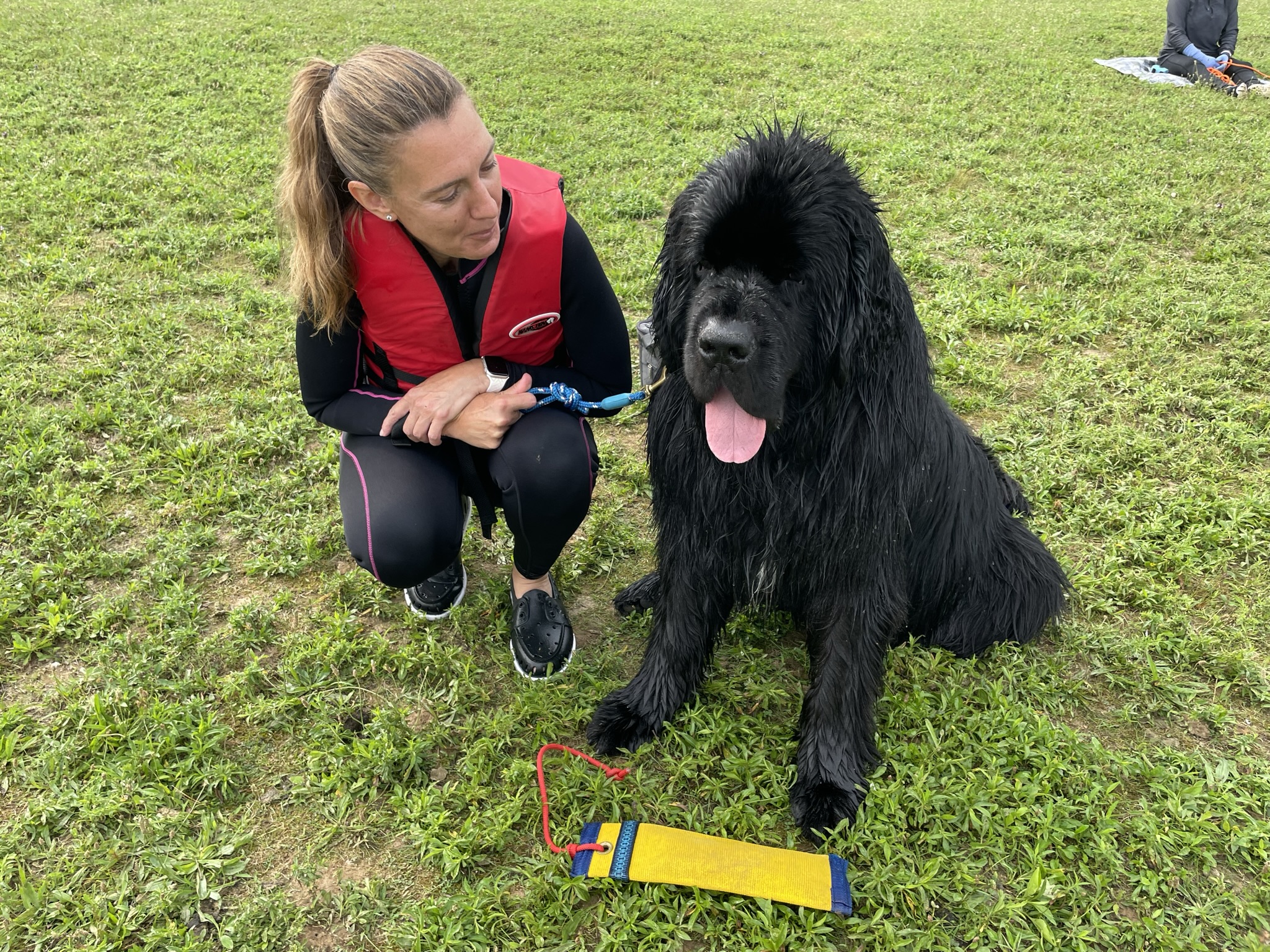
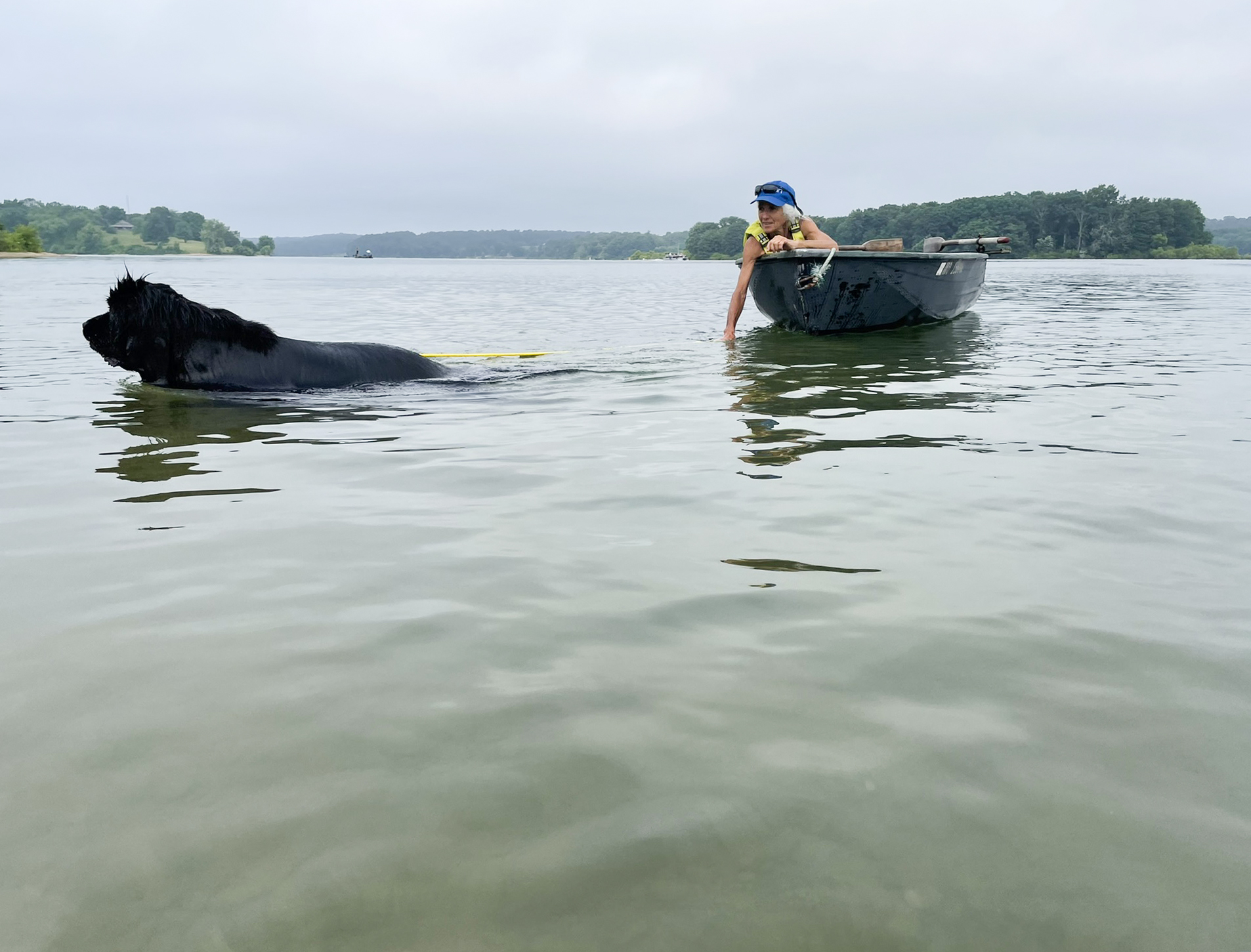
Now, this boat was a 12-foot aluminum Smokercraft that weighs 112 pounds without a motor. Inside the boat were two adults, so let’s say they weighed 350 pounds together. Add the oars and other gear and you’re probably talking 500 pounds of weight to haul through the water from a dead stop. Cosmo did it with ease and earned the trainer’s praise. “‘Take-and-hold’ is the cornerstone for water rescue work,” Marino explained. “It’s very important to take the time to teach it and teach it well.” The other senior dogs took their turns with varying degrees of success.
The next exercise saw three volunteers in the water about chest deep. The one in the middle started splashing and calling for help. Five-year-old Percy swam to the rescue with a bright orange life ring that he took straight to the one of the three men who was obviously in distress, then pulled him toward shore once the victim had grabbed hold of the ring. Percy belongs to Theresa and Scott Rainey, who had come from Alexandria, Va., to participate in the training.
Noah and I hung around all morning, meeting the dogs and their owners and watching them in action. Colleen and Pablo Balmaseda came from Silver Spring, Md., with their 1-1/2-year-old pup, Gub. Colleen’s family had a Newfie when she was a kid, she told me, but Gub was their first one as a couple. “We’ve come to several weekend trainings,” she said. “We want to get him certified.”
We also met Rosalyn Shum from Loudon, Va., who brought her 8-year-old Newf, Tiffany. Tiffany had her own custom drool bib. “She used to be a show dog,” Rosalyn explained, “but she couldn’t care less” about trophies. “Her purpose in life is to be adored,” she said. And for that, no training is needed.
Shipwrecked Newfies Evolve into Chesapeakes
The ship Canton out of Baltimore, sailing short-reefed through a storm along the barren coast of Maryland in 1807, encountered a British brig from Newfoundland taking on water. Her crew had given up hope of rescue and tried to drown their sorrows in booze before they drowned in the brine.
The Canton sent a boat across to take the inebriated sailors to safe harbor. With them came a pair of water-soaked pups. When they arrived in Norfolk, the mate of the Canton bought the pups from the rescued sailors for a guinea apiece.
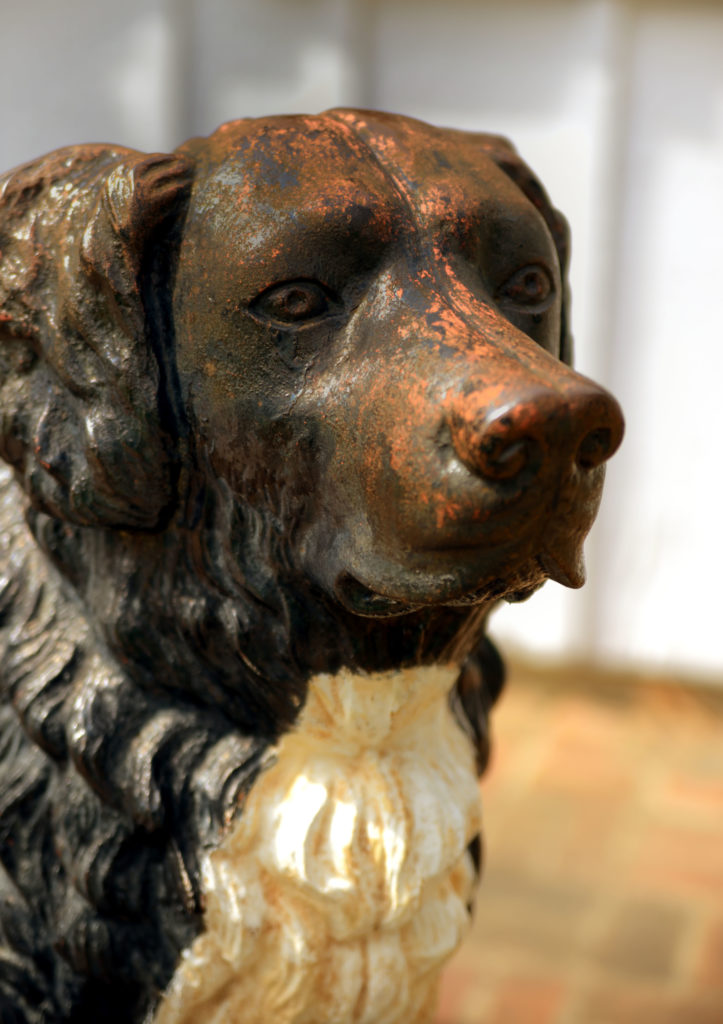
These were Newfoundland water dogs, a male and a female, named Sailor and Canton. They were thought to have been born of different families. The mate gave Sailor to John Mercer of West River, south of Annapolis. Canton came to be owned by Dr. James Stewart of Sparrows Point on the Gunpowder River, north of Baltimore.
Mercer traded Sailor to Gov. Edward Lloyd V for a valuable Merino ram. Lloyd brought the dog across the Bay to his ancestral home, the Wye House on his family’s vast plantation, where Sailor proved his value as a natural duck-hunting retriever.
Meanwhile, Canton was also proving her duck-hunting instincts in the marshes around Carroll’s Island. While it’s unlikely that the two dogs were ever bred together, each of their owners carefully selected other dogs for them to breed with in order to enhance the ability of their progeny to retrieve downed waterfowl.
The animals introduced into the bloodline included native hounds, coon dogs, water spaniels (the source of the curly fur)—and according to at least one myth—otters. The odd result was that after 80 years of selectively breeding the offspring of two separate dogs on opposite sides of the Bay, their descendants were brought together in Baltimore and they were found to be nearly identical. So much so that the American Kennel Club recognized the Chesapeake Bay “Ducking Dog” as a uniquely American breed in 1888.
Since then, what we now call Chesapeake Bay retrievers have come to be considered the world’s most capable dogs for hunting waterfowl. Their “sedge” color helps them blend into the winter marsh grasses that cover duck blinds. Their oily, double-thick coat protects them from icy water, and their instinct to find and bring downed birds back to their owner has become legendary.
It’s no wonder they have been sought after by haughty and humble hunters alike. President Teddy Roosevelt owned a Chesapeake who was a descendant of one owned by Gen. George Custer. It became the official dog breed of Maryland in 1964. You can see a statue dedicated to the Chesapeake Bay retriever on the grounds of the Chesapeake Bay Maritime Museum in St. Michaels, Md.

